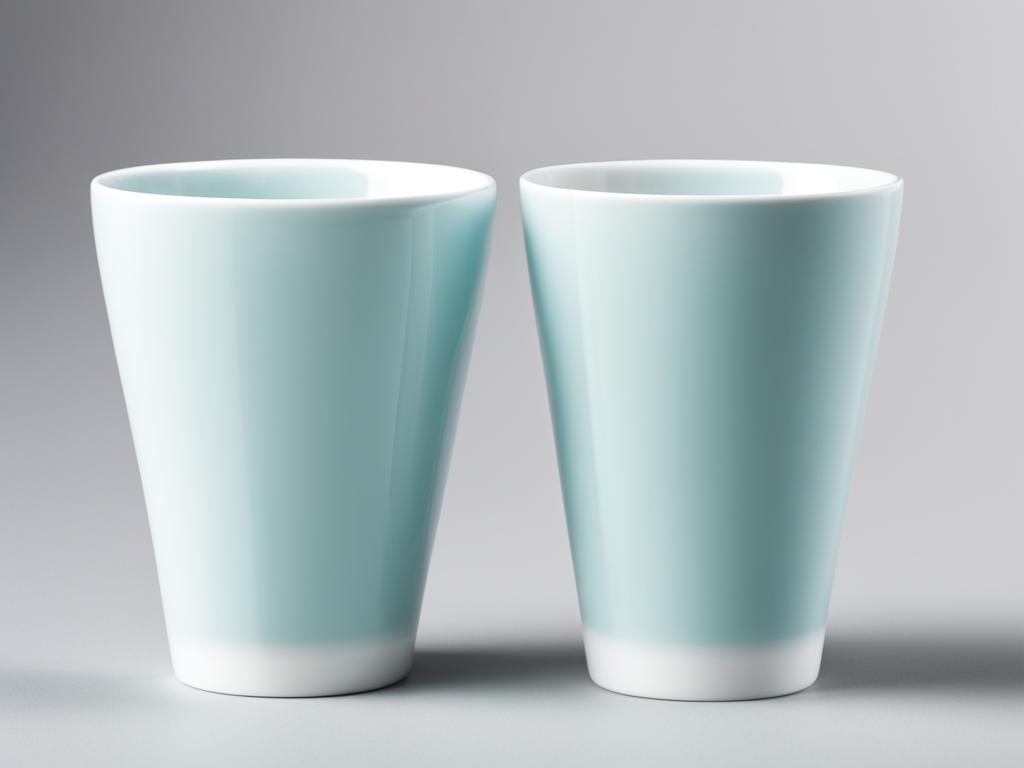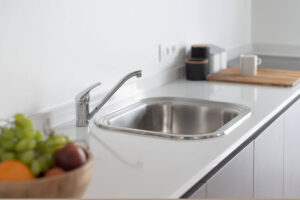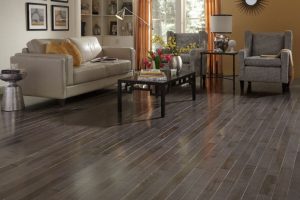Vitrelle glass and porcelain are two popular choices for dinnerware, each with its unique strengths and weaknesses. In this article, we will compare the durability of vitrelle glass and porcelain to determine which material offers superior durability for your table. We will explore their composition, heat resistance, weight, appearance, and overall durability to help you make an informed decision.
Key Takeaways:
- Vitrelle glass and porcelain are both commonly used for dinnerware.
- Vitrelle glass is known for its exceptional durability and resistance to chipping or cracking.
- Porcelain is elegant and often chosen for formal dining experiences.
- Vitrelle glass is generally stronger and more heat-resistant than porcelain.
- Consider factors such as appearance, weight, and overall durability when choosing between vitrelle and porcelain.
Vitrelle Glass – The Pros and Cons
Vitrelle dishes are a popular choice for those seeking durability and reliability in their dinnerware. Made from three layers of fused glass, these dishes are exceptionally sturdy and long-lasting.
One of the key advantages of vitrelle dishes is their durability. They are designed to withstand the rigors of everyday use without chipping or cracking. This makes them a reliable option for busy households and ensures they can endure frequent handling and stacking.
Another benefit of vitrelle dishes is their lightweight nature. They are easy to handle, even for individuals with limited strength or dexterity. Additionally, their lightweight design makes them effortless to stack and store, saving valuable cabinet space.
Vitrelle dishes are also known for their easy cleaning properties. They are dishwasher safe, allowing for quick and convenient cleanup after meals. Moreover, they are microwave safe, making it convenient to reheat leftovers or warm food without transferring to another container.
For those concerned about the appearance of their dinnerware, vitrelle dishes offer a transparent option. The transparent nature of the glass adds an elegant touch to any table setting, allowing the beauty of the food and table decor to shine through.
Furthermore, vitrelle dishes are chip resistant. This means that they can withstand accidental impacts and mishandling that might otherwise result in chips or cracks. This chip-resistant quality ensures that your vitrelle dishes will maintain their pristine condition for a long time.
However, it’s important to note that vitrelle dishes are typically more expensive than other types of crockery. Also, while the transparent nature of the glass can be appealing to some, it may not be to everyone’s taste or style preference.
Overall, vitrelle dishes provide a winning combination of durability, lightweight convenience, and easy cleaning. Their chip-resistant nature and transparent design make them an excellent choice for individuals and families looking for long-lasting and elegant dinnerware.
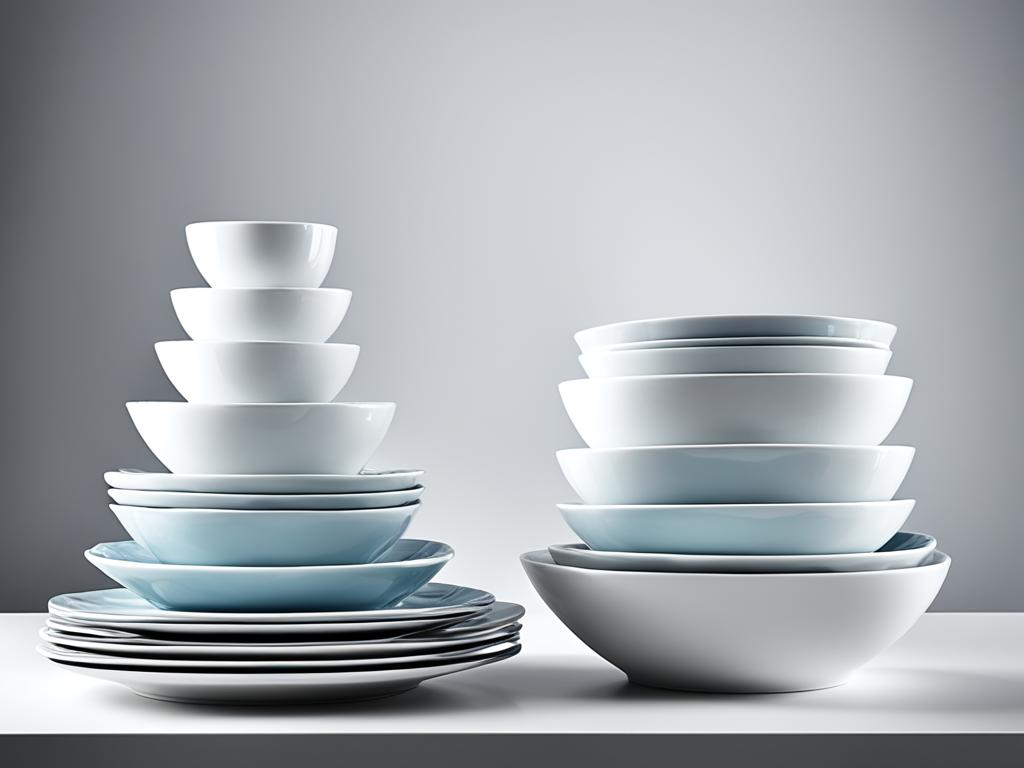
Porcelain – The Pros and Cons
Porcelain dinnerware exudes an air of timeless elegance and sophistication. It is known for its delicate beauty and is often chosen for formal dining experiences.
Porcelain plates are heat resistant, making them suitable for use in ovens and microwave ovens. This feature allows you to conveniently heat or cook meals directly in your porcelain dishes without worrying about damage or safety concerns.
However, porcelain is heavier compared to vitrelle glass, which can make it more challenging to handle and stack. The weight of porcelain plates adds a sense of durability and sturdiness but may require some extra effort when maneuvering or organizing your tableware.
Porcelain dishes can be susceptible to chipping or breaking if mishandled or dropped. Although they are crafted with care and precision, accidents can happen, and it’s essential to handle delicate porcelain with caution to maintain its beauty and functionality.
They are also typically more expensive than vitrelle dishes due to the intricate patterns and designs that adorn porcelain dinnerware. Each piece of porcelain exhibits unique craftsmanship and attention to detail, making it a true work of art. The timeless and elegant designs justify the higher price tag for those seeking to elevate their dining experience.
Overall, porcelain brings a touch of sophistication to any table setting but requires careful handling and may be a heavier option compared to vitrelle glass. Let’s move on to comparing vitrelle glass and porcelain in the next section.
Comparison: Vitrelle Glass vs Porcelain
When comparing vitrelle glass and porcelain, there are several factors to consider. Vitrelle glass is known for its durability and strength compared to porcelain. It offers excellent heat resistance and is lightweight, making it easier to handle and stack. On the other hand, porcelain is more delicate and prone to chipping or breaking. It is also heavier than vitrelle glass, which may be a consideration for some users.
Vitrelle Glass:
- Durability: Vitrelle glass is generally stronger and more durable than porcelain.
- Heat Resistance: It offers excellent heat resistance, allowing it to withstand hot food and beverages without damage.
- Weight: Vitrelle glass is lightweight, making it easier to handle and stack.
- Appearance: Vitrelle glass is transparent, adding an elegant touch to any table setting.
Porcelain:
- Durability: Porcelain can be more delicate and prone to chipping or breaking compared to vitrelle glass.
- Heat Resistance: It offers good heat resistance and can be used in ovens and microwaves.
- Weight: Porcelain is heavier than vitrelle glass, which may impact its ease of handling and stacking.
- Appearance: Porcelain is available in a wide range of designs and patterns, offering a variety of options for table decor.
To summarize, vitrelle glass is known for its durability, heat resistance, lightweight, and transparent appearance. Porcelain, on the other hand, offers a wider range of design options but can be more delicate and heavier in weight. Consider your specific needs and preferences to choose the dinnerware material that suits your style and lifestyle best.
Other Considerations: Bone China vs Vitrelle vs Porcelain
In addition to vitrelle glass and porcelain, another material to consider is bone china. Bone china is a type of porcelain made from bone ash material. It is known for its elegance and is often used for formal dining settings. Bone china is typically more durable than regular porcelain and can withstand heat better. However, bone china and porcelain can be more fragile compared to vitrelle glass. When it comes to durability, vitrelle glass tends to be the strongest and most resistant to chipping or breaking.
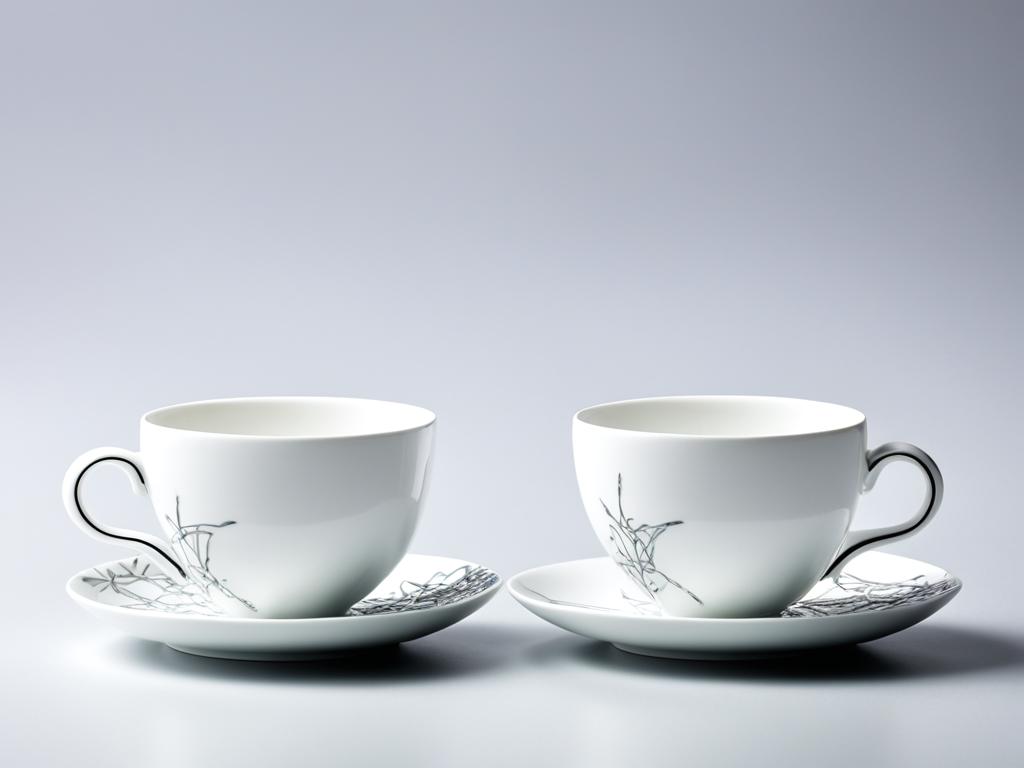
| Material | Elegance | Durability | Heat Resistance |
|---|---|---|---|
| Bone China | Elegant | More fragile than vitrelle, less fragile than porcelain | High |
| Vitrelle Glass | Transparent | Strongest and most resistant to chipping or breaking | High |
| Porcelain | Delicate | Less durable than bone china and vitrelle glass | High |
Tempered Glass vs Porcelain
When it comes to choosing dinnerware, tempered glass and porcelain are two popular options known for their durability and elegance. Let’s explore the key differences between these materials to help you make an informed decision for your table.
Tempered Glass Dinnerware
Tempered glass dinnerware is created through a process of heat treatment, which increases its strength and durability. This makes it highly resistant to breaking and chipping, ensuring that it can withstand the demands of everyday use. Whether it’s a lively family dinner or an intimate gathering with friends, tempered glass dishes are designed to last.
One of the standout features of tempered glass dinnerware is its excellent heat resistance. You can confidently serve hot food and beverages without worrying about damaging the dishes. This heat resistance also makes them suitable for oven and microwave use.
In addition to its durability and heat resistance, tempered glass dinnerware is lightweight and easy to handle. This makes it a practical choice for everyday use, especially for those who prefer dishes that are comfortable to hold and stack.
However, it’s worth noting that tempered glass dinnerware may have a higher price point compared to porcelain. Additionally, while beautiful, tempered glass dishes may not offer the same intricate designs and patterns found in porcelain options.
To summarize, tempered glass dinnerware combines durability, heat resistance, and lightweight convenience. It’s a practical and reliable choice for those seeking long-lasting and versatile dishes for their table.
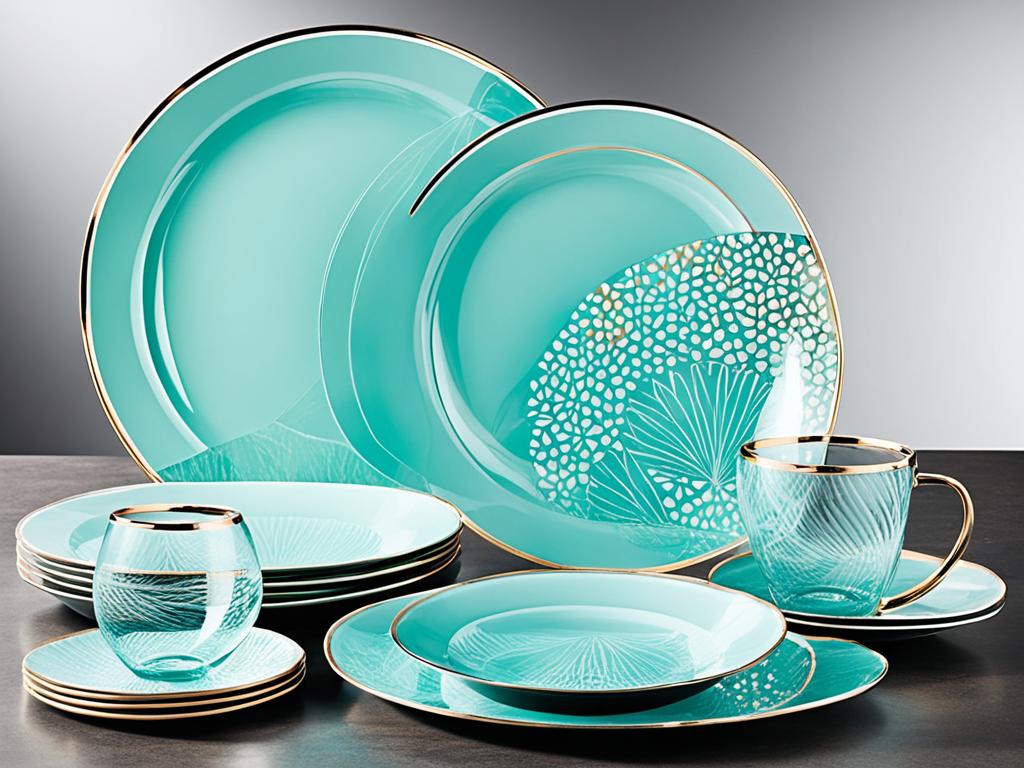
Conclusion
When it comes to deciding between vitrelle glass and porcelain for your dinnerware, it ultimately comes down to personal preference. Both materials have their advantages and considerations to keep in mind.
Vitrelle glass offers exceptional durability, making it highly resistant to chipping and cracking. It is also lightweight, which adds convenience in handling and stacking. Along with its durability, vitrelle glass dishes are easy to clean and maintain, making them a practical choice for everyday use.
On the other hand, porcelain dinnerware exudes elegance and sophistication, making it a popular choice for formal dining experiences. Porcelain plates are heat resistant and can be used in ovens and microwaves without any issues. However, porcelain is typically heavier compared to vitrelle glass, which may affect its ease of use.
Consider factors such as heat resistance, weight, appearance, and overall durability when choosing the best dinnerware material for your table. Evaluate your needs and preferences to make an informed decision that suits your lifestyle and enhances your dining experience.
FAQ
What is vitrelle glass?
Vitrelle glass is a type of dinnerware made from three layers of fused glass, known for its exceptional durability and resistance to chipping or cracking.
Is vitrelle glass lightweight?
Yes, vitrelle glass is lightweight, which makes it easy to handle and stack.
Are vitrelle dishes easy to clean?
Yes, vitrelle dishes are easy to clean and are dishwasher and microwave safe.
Are vitrelle dishes transparent?
Yes, vitrelle dishes are transparent, adding an elegant touch to any table setting.
What is porcelain?
Porcelain is a type of dinnerware known for its delicate beauty and timeless elegance, often chosen for formal dining experiences.
Is porcelain heat resistant?
Yes, porcelain plates are heat resistant and can be used in ovens and microwave ovens.
Is porcelain heavier than vitrelle glass?
Yes, porcelain is heavier compared to vitrelle glass, which can make it more challenging to handle and stack.
Is porcelain prone to chipping or breaking?
Yes, porcelain dishes can be susceptible to chipping or breaking if mishandled or dropped.
What factors should I consider when comparing vitrelle glass and porcelain?
Consider factors such as durability, heat resistance, weight, appearance, and overall durability when comparing vitrelle glass and porcelain.
What is bone china?
Bone china is a type of porcelain made from bone ash material, known for its elegance and often used for formal dining settings.
Is bone china more durable than regular porcelain?
Yes, bone china is typically more durable than regular porcelain and can withstand heat better.
What is tempered glass dinnerware?
Tempered glass dinnerware is made through a process of heat treatment, which increases its strength and durability.
Is tempered glass dinnerware expensive?
Tempered glass dinnerware may be more expensive than porcelain but offers excellent heat resistance and durability.
Which is stronger, vitrelle glass or porcelain?
Vitrelle glass is generally stronger and more durable than porcelain.
Which material is the most resistant to chipping or breaking?
Vitrelle glass tends to be the most resistant to chipping or breaking compared to porcelain and bone china.
What is the best dinnerware material?
The best dinnerware material depends on personal preference. Vitrelle glass offers exceptional durability, while porcelain exudes elegance and sophistication.
